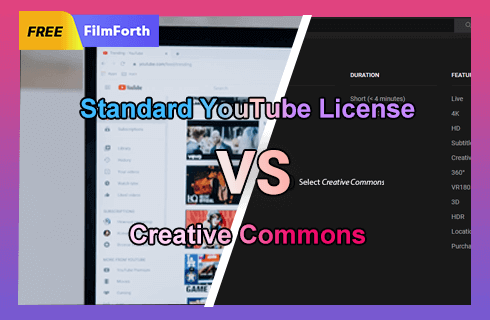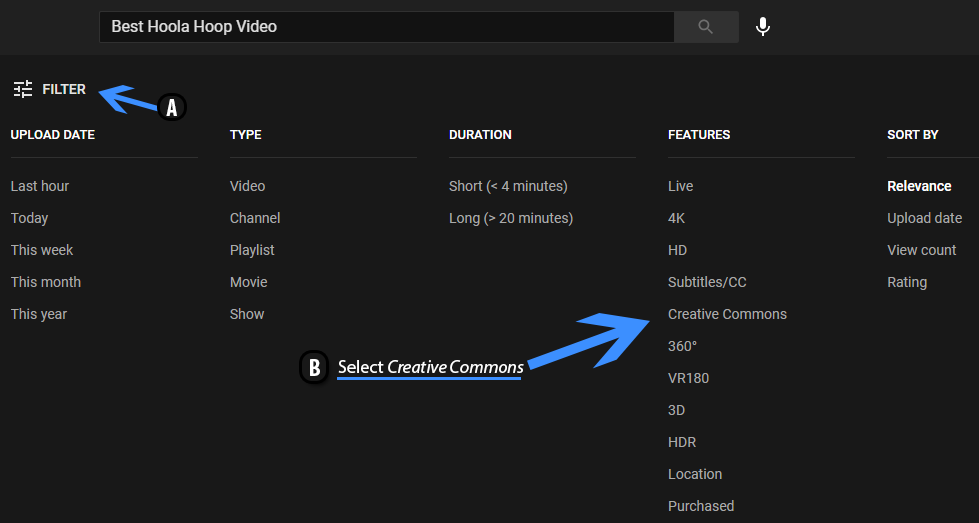Standard YouTube License VS Creative Commons
This post tells everything you want about the differences between Standard YouTube License and Creative Commons.

Standard YouTube License VS the Creative Commons
Art and the consequent creative work have been plagiarised for decades and often reused for commercial purposes without the author’s consent. Imitation is flattery, perhaps for some but not when it’s losing revenue for the creator.
Once you are on YouTube, it becomes increasingly difficult to keep others from stealing your content. For this very reason, YouTube provides different content licenses to protect your intellectual property.
About a decade ago, YouTube added creative commons support along with their standard license. This paved the way for independent creators to reuse others’ content with permission in their own capacity without worrying about the hammer of copyright strike. Three of them on your channel, and your shop on the platform is shut for good.
1. Difference between Standard YouTube License and Creative Commons
The bottom line is that a video with a standard YouTube license cannot be reproduced, reused, or any portion of the video without the authorization of the creator.
It remains the default license on all videos unless manually changed by the user.
On the other hand, videos with creative commons license can be edited, recompiled, or even altered according to their liking. No permission or authorization is required from the original author.
The thing to be noted here is that creative commons do not work on content ID-claimed videos. Fundamentally, any videos that the system automatically detects as a YouTube partner’s copyright property (such as record labels, film studios, etc.).
For details on standard YouTube license and creative commons, please read on.
More YouTube Tips: Top 10 YouTube to MP3 Converters, 5 Ways to Download YouTube Videos Without Software, How to Make YouTube Intro Video
2. What is a Standard YouTube License
Whenever you publish anything online, a license helps protect your content online from being reproduced, re-used, and distributed without your permission.
On YouTube, you give that license when you publish a video. You are granting rights to YouTube for publishing the content. What this means is that it can only be viewed on your channel on YouTube. It cannot be reproduced, distributed, or reused in any form without your permission.
Related: What Does Unlisted Mean on YouTube?
Can I use a video with a Standard YouTube License in a Non-profit capacity?
All the rights to the video lie with the creator. You will approach them, asking for permission before assuming otherwise.
What happens if someone uses your content with a Standard YouTube License?
The video-sharing platform provides ways to protect your content under the standard license.
If your copyrighted content is posted on YouTube by other channels, you can file a copyright takedown claim. The defaulter in question will receive a copyright strike on the video which has plagiarized your content.
They have two options, either to accept it or file a dispute. After that, an independent inquiry is set up to determine the validity of your claim by you.
If the claim comes in your favor, you receive the earnings that copyrighting violates video earned using your content. On the other hand, in the case the claim is not successful, the content creator will not be penalized with a copyright claim.
Before we move forward, the abuse of the copyright complaint may result in account suspension. So use it with discretion and when the claim’s legitimacy is beyond a reasonable doubt.
3. What is a Creative Commons in YouTube
A group of non-profit organizations in the US, backed by OKF from the UK, decided on creating a license for copyrights. A license by the name of Creative Commons enabled free distribution of the otherwise “copyrighted” content, in the general essence.
Creative Commons also aims at providing the rights to use, share, and build on what the author built. It protects such creators from the concerns of copyright infringement.
As discussed earlier, Creative Commons was made available to creators back in 2011. What it means is that you can set a video to Creative Commons license while publishing(or change license later on), and other creators can use the video without risking copyright violation.

License and Distribution
What can you attribute to the Creative Commons license?
- A video created by the author
- Videos are in the public domain due to a variety of reasons. They may range from expiring of the license to, author’s waiving of rights, amongst others.
- Any video marked with a CC BY license. This license allows users to copy and distribute the video in an unadapted form and proper attribution given to the creators.
How to search for Creative Commons licensed content on YouTube?
It’s one thing to provide creative commons license to a video. Searching for such licensed content for your videos is another ballgame.

Search Creative Commons Licensed Content
Search for anything from the search bar on YouTube. After that, click on the Filter button for advanced search options.
Find the Creative Commons under the Features row and click on it. The search will display results with the creative commons licensed videos.
Do bear in mind that the search will be reset once you search with another keyword.
How to Check if the video has a creative commons license or not.
Head to the information of the video and find the License heading, which would say Creative Commons Attribution license(reuse allowed)

Check Creative Commons License
4. Copyright Violation/Strike on the video
Any video with a standard license is out of the question. You need permission from the author of the video for using the video or any portion of it. As iterated numerous times already, the creator of the video can file copyright violations against your video.
Creative Commons licensed videos are a relatively safer space for content creators. While using videos with such licenses may not necessarily attract violations, it is generally advised to accredit the authors.
There are different kinds of creative commons licenses. For instance, some of them may not allow usage for commercial purposes. That means you may not be allowed to monetize it.
5. Conclusion
Both the licenses have their individual use on YouTube. The standard license works for virtually all videos as long as they have content that is original; parts borrowed with permission.
However, there always hangs the ax of a copyright violation, which may affect your channel’s future.
Things are a little different with creative commons. Use it the way you want and create new content out of it. Don’t forget to credit the author wherever it seems necessary.
Related Articles
FilmForth - Free Video Editor
- Easy to use and no skill required at all.
- Export video to MP3 with one click.
- Add transitions, effects, filter, text to the video as you want.
- Remove, replace, record and edit the background audio easily.
- Change the speed, volume, and subtitle on video with ease.
- Stabilize, trim, rotate, and convert video in seconds.



